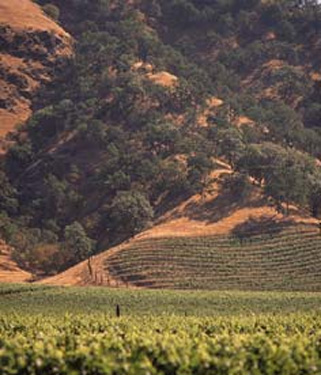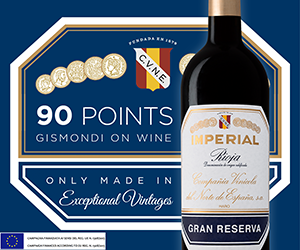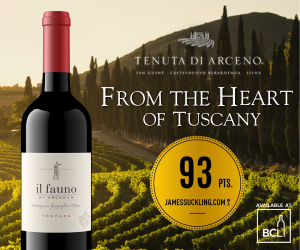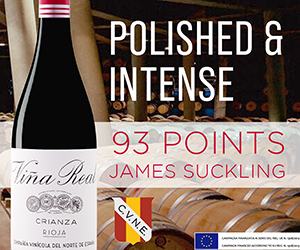When I hear "organic" and "grapes" used together, my eyes often glaze over.

It's not that I am opposed to organic anything, it's just that most of the organic wine I have been asked to taste is É well, not very good. I also object to the price gouging that seems to accompany almost anything with "organic" on the label.
However shoddy wine-grape growing practices may have been in the past, today they're very pure. Respect the land is the number one watchword in the business, and most everywhere I travel, vineyards are treated like shrines. The use of pesticides, herbicides and synthetic fertilizers is a last resort -- if they are used at all.
Cover crops that retain moisture and both good and bad bugs, nesting areas for birds that prey on pests and a host of other environmentally friendly practices have righted the balance of nature in vineyards.
Many wineries practise good (organic) farming, but don't shout about it for the reason I stated at the beginning of this column. One that's beginning to make a fuss is California's Bonterra Vineyards.
All Bonterra wines are made entirely from grapes certified by the state of California as "organically grown." To be sure, this is not strictly organic wine, but it's made with organically grown grapes.
That's because at Bonterra, wines are produced using minimal sulphites in order to ensure freshness and prevent oxidation. Under California's rigorous farming standards, the wine is called "organically grown," whereas "organic wine" is grown and produced without the use of any added sulphites.
While I accept that sulphites are a problem for those who want a rigorously organic wine, it's not an issue at Bonterra, where minimal amounts preserve an organically grown product. Winemaker Robert Blue thinks "grapes from these vineyards exude uncommon vibrancy and concentration," giving him "the finest ingredients to nurture into wine."
Bonterra began a dozen years ago when Fetzer Vineyards bought a ranch called Valley Oaks in Mendocino County on which to grow organic food and explore combining food with wine.
Blue says: "With this garden we saw incredible flavour, incredible diversity. We saw a simple way of farming in which insects balance each other out. We felt that we could take this to the vineyard and that we could increase the flavour and improve the quality of the wines we were striving to make. The amazing thing is, it doesn't cost any more to farm this way."
As you might expect, all Bonterra wines are packaged in recycled glass and labelled with kenaf, a treeless paper made from the hemp plant. All dyes and inks are water-soluble.
Okay, but are the wines worth buying? Here are my tasting notes:
Viognier is always aromatic and often described as smelling like gardenias and or honeysuckle. I find in California it has more peach than honeysuckle flavour, and more of a vanilla scent. Six months of lees stirring gives this wine fine mouthfeel and a plush finish. It's full-bodied, yet delicate in the finish. It would be good to try with your favourite Asian dish.
The chardonnay is fermented in new, one- and two-year-old American oak barrels that help to blend the vanilla with the citrus-flavoured fruit. The fruit has a spicy edge that finishes soft and round with plenty of creamy texture. The winery suggests serving this with halibut, but it has enough texture and weight to sip on its own.
The cabernet-sauvignon takes a page from the Down Under blend book by adding some syrah and a dash of merlot. Playing both sides of the fence, winemaker Blue blends wines aged in French and American oak (43 per cent of it new) to come up with a spicy, peppery, fragrant red from a terrific vintage. There's fine body and density for the price, but the real story is the smoky cocoa and coffee flavours, plus sweet blackberry fruit. You can drink it now or keep a year or two.
The syrah is clearly one of the Bonterra's stars. The grapes come from the Sanel Valley in southern Mendocino County. This California varietal excelled in '97, so it bursts with colour and rich blackberry/blueberry and cola flavours. It's rich, soft and very tasty. Hearty stews, osso buco, lamb chops or strong cheeses would be my suggested food pairings.
The vineyard has only made three vintages of zinfandel, but the '98 maybe the best yet. It's all stainless-steel-fermented, and aged mostly in old American oak. The fruit is plummy and the texture plush, but not quite as soft as the 1997. The finish is spicy -- slightly more peppery than that of the syrah. It's a perfect pizza partner that would also work with roast pork.
Bonterra Vineyards, North Coast California
Producer: 1998 Viognier
Price: $24.94
Stock No.: 573691
Score: 15/20
Comments: Creamy textures, peachy fruit.
Producer: 1999 Chardonnay, Mendocino County
Price: $21.95
Stock No.: 342436
Score: 14.5/20
Comments: Bright lemon/apple flavours.
Producer: 1997 Cabernet Sauvignon
Price: $24.95
Stock No.: 342428
Score: 16.5/20
Comments: Delicious.
Producer: 1997 Syrah, Mendocino County
Price: $24.95
Stock No.: 573709
Score: 16/20
Comments: Blackberry, cola and spice.
Producer: 1998 Zinfandel
Price: $24.95
Stock No.: 530139
Score: 14/20
Comments: Friendly, rich, round.
Written By: ag

 quicksearch
quicksearch





